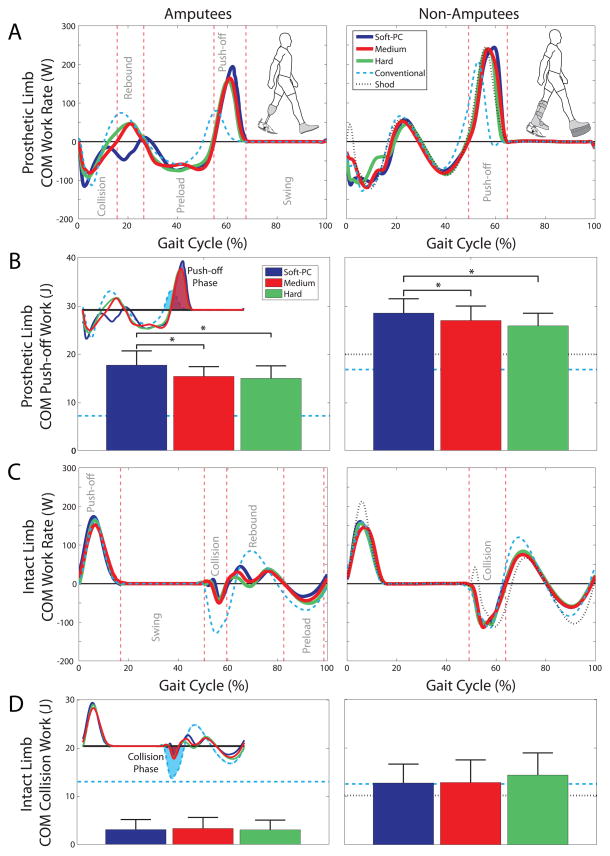Figure 3.
COM work rate, prosthetic limb Push-off and intact limb Collision work. Average COM work rate for (A) prosthetic and (C) intact limbs are plotted across a full gait cycle (beginning with prosthetic heelstrike) for Amputees (left column) and Non-Amputees (right column). Phases of gait – Collision, Rebound, Preload, Push-off, Swing – are defined for each limb based on alternating regions of positive and negative COM work, and approximate regions are shown for the Medium spring by vertical lines. The (B) prosthetic limb Push-off work and (D) intact limb Collision work were integrated from the shaded phases shown, which were defined independently for each subject and condition. Softer spring stiffness led to increased prosthetic limb COM Push-off, but stiffness did not have a significant effect on intact limb Collision work. Also, amputees appeared to perform less prosthetic limb COM Push-off work and less intact limb COM Collision work than Non-Amputees. Reference lines are shown for walking on a Conventional prosthesis (dashed line) and in street shoes (dotted line) for Non-Amputees.

